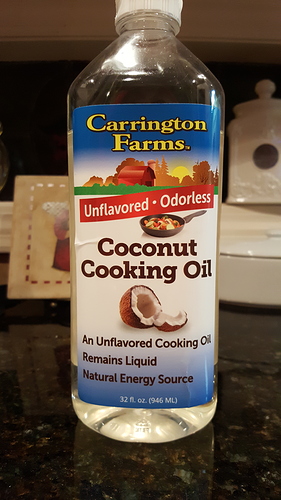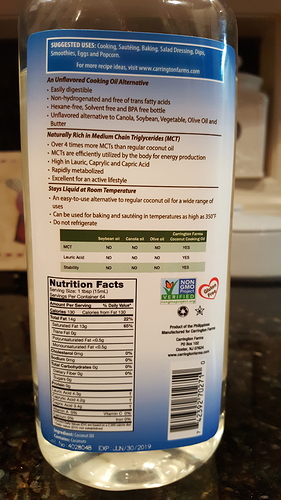Wow. I can’t keep it long enough for it to go rancid. I was beginning to think it was indestructible. Mine says 76 degrees is the cut off for liquid to solid. My house usually runs a little on the cool side, so it’s always solid. I use it mostly in my coffee, but occasionally I cook with it. I just scrap it out with a spoon and guess the amount. Needles to say, I’m not a good cook. But I learn, and I have a few things I can make really well. I learned a trick with the jar though. It gets awkward to spoon out at times when it has all these craters in it from previous spooning. I put it in the cabinet above my fridge (which is pretty much perpetually 80 degrees because of the heat from the fridge) over night to liquify it. I later put it back in the pantry to solidify again to a nice flat surface, easy to spoon.
If you really have issues, here is what I would do…
Assuming you have heard he large plastic jar like I have, roughly half gallon size, find a smaller glass jar that will hold at least the amount you expect you will be cooking with. Like a ball canning jar for instance. Something that can withstand heat. Not like the jar mine comes in. I washed it out in the dishwasher, and well, remember “shrinky dinks”? Yeah, it was comical.
So… take the smaller glass jar that is now filled with liquid oil, and find a warm location to keep it. Or, if no warm location is available, preheat the jar in a pan of very hot water. It will melt down in a few minutes. Maybe 15 to 20 (educated guess, I could be wrong, I haven’t tried it). And just refill the jar as needed.




